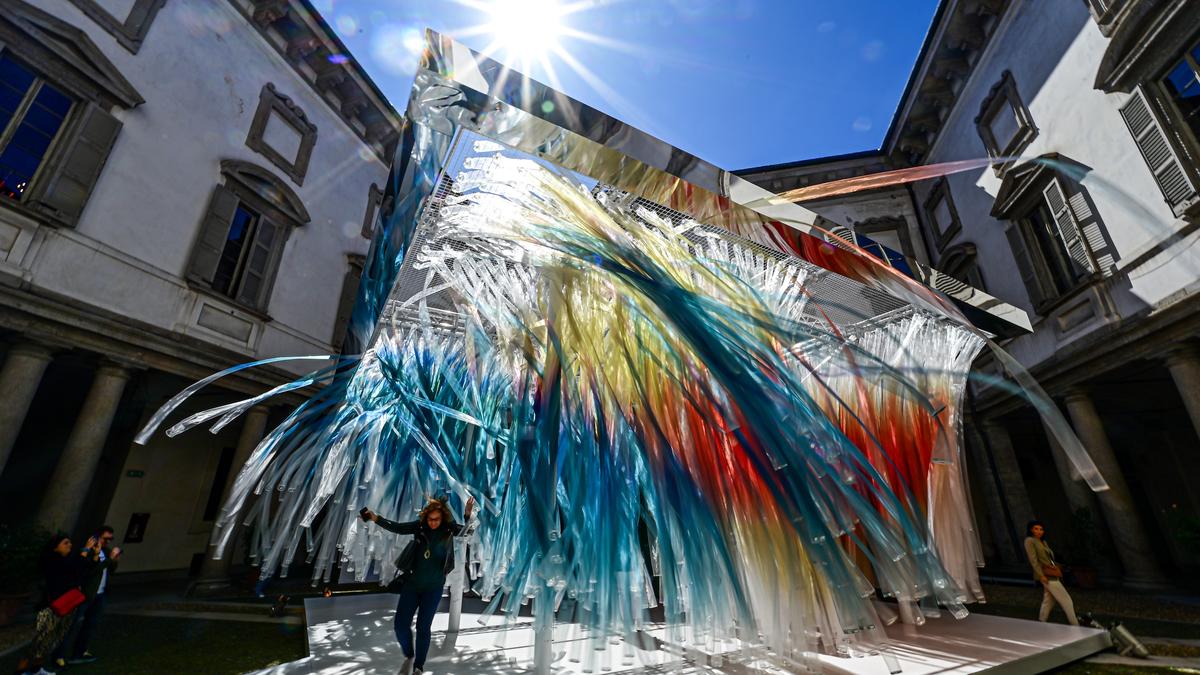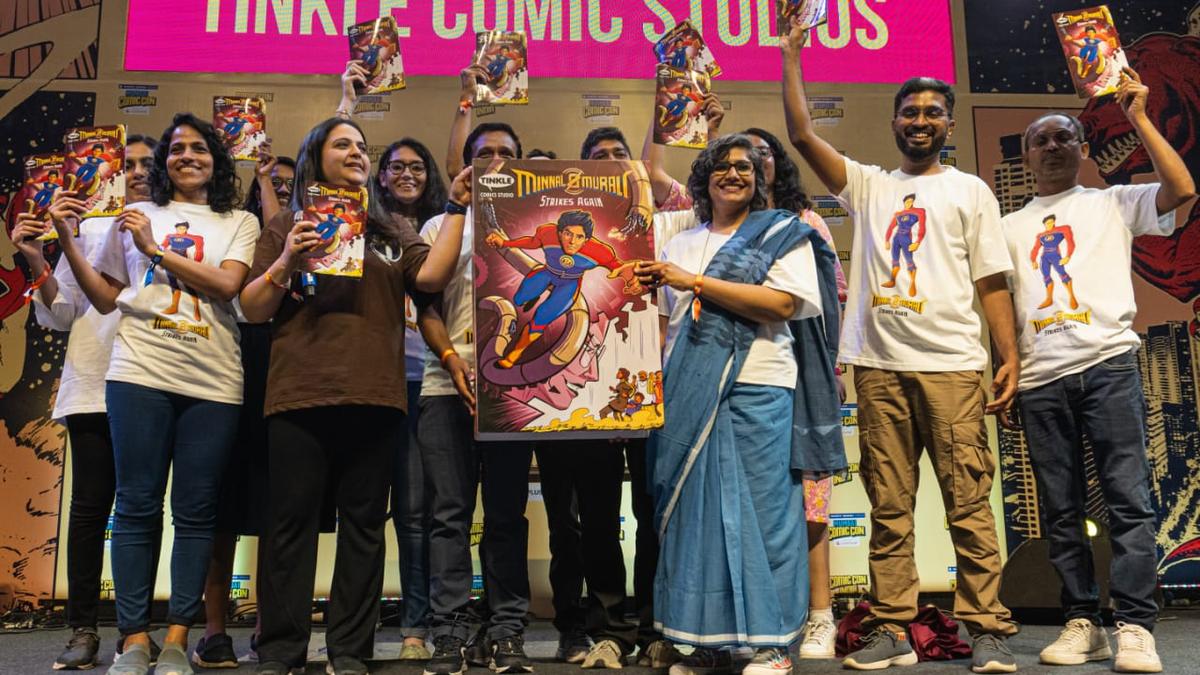
When she was a young woman, my mother taught dance at Nritya Bharati, one of the earliest dance schools in Kolkata. It had been set up by a well-known dancer couple, Prahlad and Nilima Das. All the students were women except for one little boy.
Bablu was the Das’s young son and he had his own Kathak teacher. But every time the teacher arrived, Bablu was nowhere to be found. “He was such a naughty and restless boy,” laughs my mother. “The teacher would come and everyone would be running around shouting, Bablu, Bablu.”
That restlessness took Bablu to the US in 1970. His dream was to take Kathak to America. In Upaj, a documentary, he reminisced that he went to the US with just $8 in his pocket and a ghungroo (ankle bells) bag. He joined the Ali Akbar College of Music in California but in time, set up his own dance school, organised a festival of Kathak dance in San Francisco, developed something called Kathak yoga, toured continents and appeared on public television. The world knew Bablu as the famous dancer Chitresh Das, part of a golden age of classical Indian arts in the US along with others who became the ambassadors of classical music and dance from India, such as Ravi Shankar, Ali Akbar Khan, Zakir Hussain and Swapan Chaudhuri.
Last month Das’s wife Celine Schein Das brought four young dancers from the Chitresh Das Institute in San Francisco to Kolkata. It was the last stop on their tour called Invoking The River. As the dancers told the stories of India’s great rivers on stage, musician Utsav Lal accompanied them on live piano much to the amazement of the audience.
Chitresh Das died in 2015 but one could imagine him smiling. All his life he had tried to push the boundaries of Kathak while being a purist when it came to form and discipline. He collaborated with tap dancers and flamenco artists. He could spin dizzyingly on stage performing complex routines and then segue into recreating the Pink Panther theme or a Wild West shootout with his footwork and ghungroos. I remember seeing him performing al fresco in San Francisco’s Stern Grove, a wiry man, talking at the speed of an express train, his voice rising to a crescendo and then slowly ebbing away.
Some traditionalists bristled, complaining that this was all too pop culture, stripping the gravitas out of centuries-old traditions. Celine remembers an audience member in Kolkata asking Das, “What is this train?” “I don’t know if she said the word gimmick but certainly implied it,” recalls Celine. “He was furious and proceeded to show her how it was based on the south Indian patterns of jaatis (caste). And he did these different compositions based on different jaatis on the spot to prove his point. It was quite a scene!” She says many did not know what to make of him. “He had so much fire. When you are blazing a trail, the fire can also burn you. Some reviews called him too flamboyant. Others called him the NRI dancer which drove him crazy. One even called him the Muhammad Ali of Kathak.”
Invoking The River continues that journey of taking Kathak out of the box, pairing it with Utsav Lal’s live piano on stage. It’s the brainchild of Charlotte Moraga, one of his earliest disciples and now the artistic director of the Chitresh Das Institute. Moraga says she learned from Das that “it’s not enough to be an excellent craftsperson. You have to say something that’s important whether its for the water, nature, children, humanity. That’s where the innovation comes from. It does not come from ‘Oh I have to do something different’.”
Moraga herself comes a colourful background. Her father was the Florida state quick draw champion who liked to hunt with a bow and arrow. She became a ballet dancer but was astounded when she saw Das on stage. “I could do pirouettes. I could do double and triple chakkars (spins) but he was wearing five pounds of bells and exploring all these complicated rhythms. I had never seen anything like that.” She responded to Das instinctively. “He was a great innovator within tradition. When he came to America, he wanted to go to Harlem and marry a jazz musician or a jazz musician’s daughter. From the beginning he was thinking contemporary, modern. Yet he was such a purist.”
Initially almost all of Chitresh Das’s students were non-desi, mostly white women. That raised a few eyebrows. Some dismissed him as a Pied Piper, leading a novelty act. But now 99.99% of the students of the institute are Indian-American. All four dancers who are part of Invoking The River are of Indian origin.
In some ways it tells the story of a diaspora community that has come of age. However, it could easily have been subsumed into an immigrant project to force-feed the second generation the culture of the motherland via mandatory doses of Kathak, Hindi lessons and dal-chawal.
Instead Invoking The River is doing something different, says Arvind Kumar who founded India Currents, the Bay Area’s first Indian cultural monthly magazine. “These are non-Indians choreographing Kathak in a new way and giving back to the art form and the motherland.”
The stories Invoking The River tell are derived from Indian mythology through text composed by the performance artist and poet Alka Raghuram. The dancers enact the rivers like Alaknanda descending to earth via Shiva’s locks, the Ganga at Varanasi’s Manikarnika Ghat, Cauvery and Godavari. Ultimately, all the rivers come together in a Sangam and invoke their lost mythical river Saraswati.
Moraga says the stories while age-old are also utterly contemporary. Mayuka Sarukkai performs Godavari, who according to legend was confined to a pot. As they were working on the piece, the US Supreme Court stripped away women’s right to choice when it came to abortion.
“She was mad that suddenly the court had decided she could not have agency over her own body. She wanted to show her Cauvery breaking out of the pot in which society tried to contain her,” says Moraga, But even as she frees herself, regaining agency, north and south India fight over rivers, draining her resources. All of that is part of the story, the mythological rendered contemporary.
Over the years Moraga says much of what has had been happening around her has found its way into her Kathak. Years ago, she was doing a piece on panchabhuta, the five elements, covid was rampant, wildfires were raging in California, the sky dark orange at noon. “It was apocalyptic, the choreography based on the movement of jellyfish because they were multiplying in the warming waters.”
I remember Das telling the Bay Area’s South Asian LGBTQ+ group Trikone that he wanted to compose a piece that would be based on Ardhanarishwara—half-male half-female representing the synthesis of Shiva and Parvati—to help them feel at home in their own culture. Trikone silkscreened T-shirts with an Ardhanarishwara image and wore them to the local India Day parade.
Das passionately wanted to take Kathak out to the entire world but not lose his way in the process. Celine remembers Das always quoted his mother as telling him, “Go out from your country and then you will know your own country.” The great doyens like Birju Maharaj asked Das to follow them but he refused. He was determined to do his own thing. He did not want to feel stifled.
He crisscrossed the Bay Area, indeed the whole country, driving hundreds of miles to teach students, restarting his parents school in India. Celine remembers she would ask him why he spent so much time teaching, putting his students on stage instead of himself.
He told her, “Celine, when you perform, you can touch somebody. When you teach, you change a life.”
Once Moraga had come to India as Das’s dancer. Now she was bringing her dancers back to the home country. And though none of them could call India their homeland the way Chitresh Das as an immigrant once had, thanks to his training, they were all unquestionably at home.
“I knew how to spin,” says Moraga. “But he taught me when to stop. He taught me to find home.”
Cult Friction is a fortnightly column on issues we keep rubbing up against.
Sandip Roy is a writer, journalist and radio host. He posts @sandipr
Source | Powered by Yes Mom Hosting






